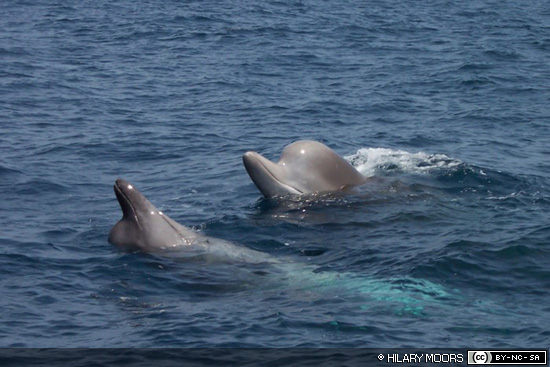Difference between revisions of "AY Honors/Species Account/Hyperoodon"
JadeDragon (talk | contribs) |
m (W126jep moved page Adventist Youth Honors Answer Book/Species Account/Hyperoodon to AY Honors/Species Account/Hyperoodon without leaving a redirect) |
(No difference)
| |
Latest revision as of 21:18, 20 September 2021
Northern and Southern Bottlenose Whales (Hyperoodon)
Where found: Northern bottlenose whale are found in the North Atlantic Ocean and is found in cool and subarctic deep waters such as the Davis Strait, the Labrador Sea, the Greenland Sea and the Barents Sea and as far south as Cape Verde Islands. Southern bottlenose whales are probably the most abundant whale in Antarctic waters.
Description: These sister species are fairly rotund with an extremely bluff melon. The beak is long and white on males but grey on females. The dorsal fin is relatively small at 30–38 centimetres (12–15 in) and set behind the middle of the back. It is falcate (sickle-shaped) and usually pointed. The Northern species measures 9.8 metres (32 ft) in length when physically mature. The back is mid-to-dark grey, with a lighter underside. The Southern bottlenose whale smaller growing to 7.5 m (25 ft) in length when physically mature. The back is light-to-mid grey, also with a lighter underside. Males are about 25% larger than females. These bottlenose whales live up to 37 years. Weight estimates are hard to come by. For the northern bottlenose whale, 5,800–7,500 kilograms (12,800–16,500 lb) is given somewhat consistently, while the smaller and less studied southern species will be lighter. The bottlenose whales are some of the deepest diving mammals known, reaching depths of 1453 m (4767 ft) The whales feed on squid, sea cucumbers, herring, cuttlefish, sea stars and other benthic invertebrates.Video Northern Bottlenose Whale

